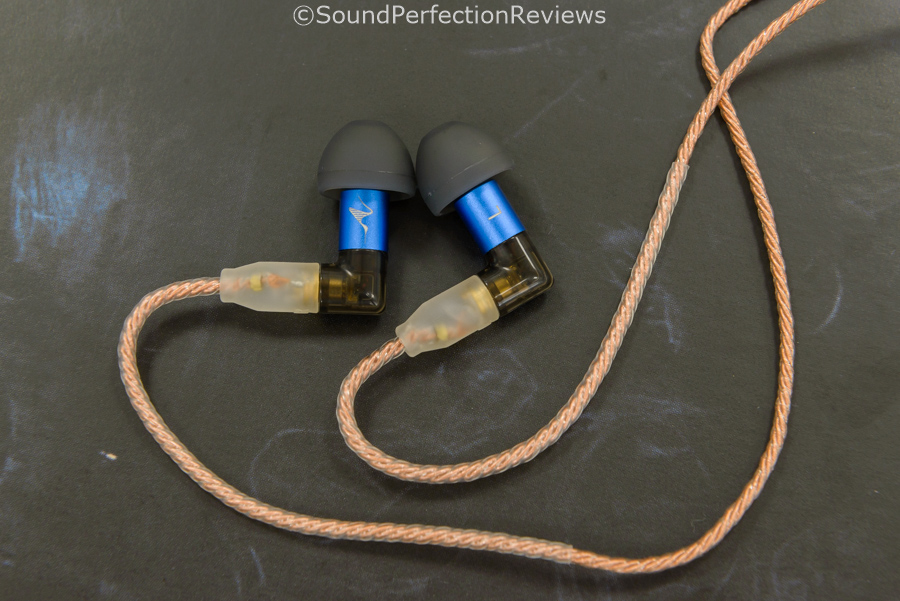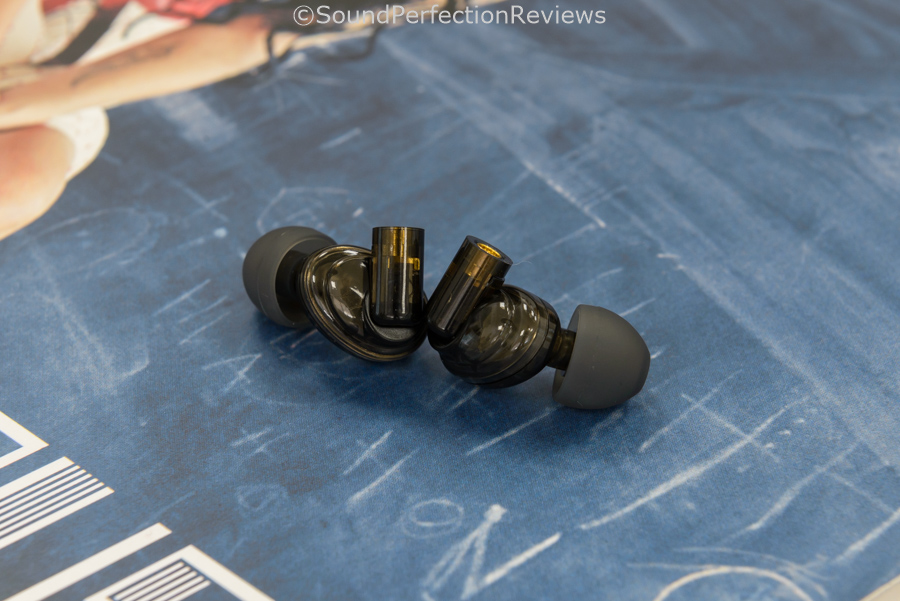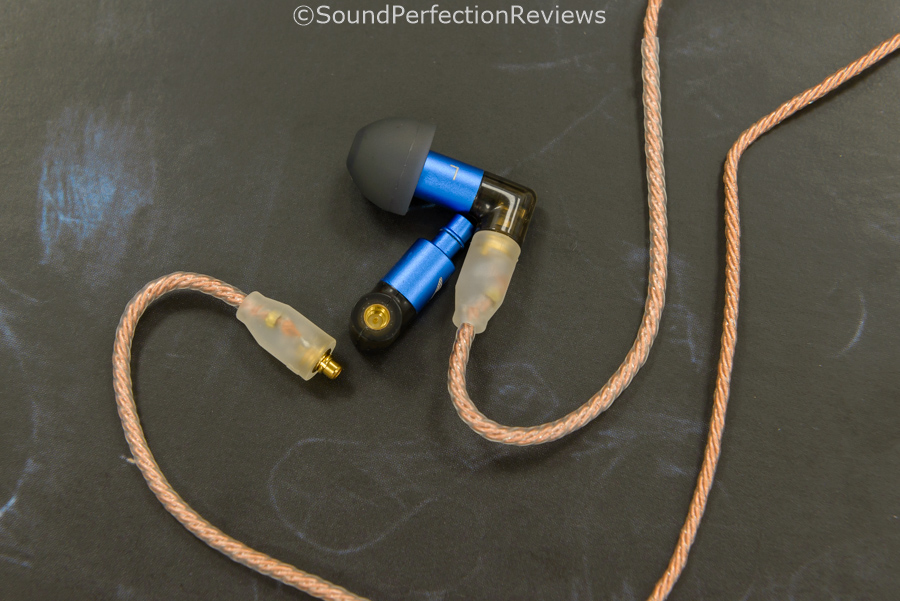Firstly, I would like to thank Catherine at Akoustyx for these samples.
*disclaimer: This sample was provided for the purpose of writing a review, no incentive was given to write a favourable review. All opinions expressed are my own subjective findings
Gear Used:
Yulong DA10 / Audio Opus #2 > R-110 / R-210


Tech Specs (same for both):
- Driver Micro Reference Balanced Armature
- Impedance 50 Ω @ 1KHz
- Sensitivity 108dB
- Freq. Response 15-22.000Hz
- Cable Length 1.2M (4.0 ft)
- Microphone 4mm Omni Directional
Packaging, Build Quality and Accessories:
Both these models come in a very similar box, it is simple with a blue colour scheme. There is a picture of the IEM’s on the front with the branding, on the side you have specs and on the back, you have a list of features and accessories. There are photos of live musicians on the box, as these are geared more towards the pro-audio market. Out of this box slides a more solid inner blue box, take the lid off and you’ll find the IEM’s held neatly in a foam tray, with accessories below. Overall simple yet effective packaging.
Build quality overall is good on both models, the R-110 is a more traditional shaped monitor with a high-density polycarbonate shell that has removable rubber gels to help them fit your ear shape better. The polycarbonate is quite thin, but once you put the outer gel on, they look and feel great. They use a standard MMCX connector.
The R-210 looks a little like some of the Etymotic models, with a narrow body that also has a rubber interface that you can either put on or leave off. They have fins to help keep the R-210 in the right place in your ear, the housing is a mixture of aluminium and high-density polycarbonate, again you have MMCX connectors here. Both models come with a braided OFC cable that is soft and supple yet has good strain relief on all parts, it also features pre-moulded earhooks, so both models are designed to be worn with the cable behind your ear.
Accessory wise you get S, M and L single flange tips with both, along with a pair of M bi-flange tips. Also included is a pair of M Comply T-100 tips, neoprene carry case and the various sizes of ear interfaces as they call them (fins for a more secure fit). Overall, they come with a solid selection of accessories for the price.
Comfort and Isolation:
With the R-110 I found them comfiest with the standard gel outer without any fins, but it’s best to experiment. Once you find the right tips, you can have the R-110 in fine for a few hours, they are lightweight and very comfortable.
I also didn’t use any of the fins on the R-210 and also found them to be very comfortable, although they do have a deeper fit than the R-110.
Isolation is excellent on both, even better with foam tips. They are fully sealed, but the more dense shell of the R-210 does help a little. Both of these are perfectly suited for noisy environments and commutes.

Sound:
Both of these models share the same driver, but in different enclosures which create small differences in the sound signature. Both were used with silicone tips.
Both of these are tuned to have a more reference style tuning, and they succeed in this. The single BA driver in these has been tuned very well to provide an even frequency response without major dips or peaks.
The R-110 has excellent linearity across the board, it has tight and fast lows that dig deep but are limited a little in their extension into the sub-bass. This gives a very accurate and responsive sound that reacts easily to the original recording, there is body when needed and these are not too dry sounding.
The midrange is well separated and controlled, yet perfectly linear and very well detailed. Layering within the midrange is really good, with vocals and guitars being well separated.
The highs are detailed and have good energy but are too up front and don’t grab your attention, they are smooth and refined yet very well balanced within the overall mix. Soundstaging is good for a single BA driver, extending fairly wide but with limited height.
This is an accurate yet enjoyable IEM, with excellent coherency and impressive top to bottom balance. This goes to show that a well-tuned single BA driver can sometimes beat multi-driver setups, or poor hybrid implementations. There is something very enjoyable about a good single BA IEM like this.
The R-210 are very similar to the R-110 as you can imagine, but to me they have a little bit more of a dense sound, with ever so slightly more articulate lows and a midrange that is a little bit more intimate. These still have an excellent balance across the board, the R-110 are a little more airy and spacious, whereas the R-210 are a little more engaging and sound a little more dynamic in their presentation.
The positioning of instruments within the stage is still excellent and they are not lacking soundstage wise, but these rely on more accurate imaging over throwing a wide soundstage.
The R-210 are ever so slightly more engaging than the R-110, and probably my preferred model out of the 2, but they both do the same kind of job very well. With an incredibly black background and great linearity all for a low price.


Conclusion:
Both of these models are easy to recommend, for just over $100 you get a more analytical tuning that can go hand in hand with more expensive models offering this kind of sound signature. They are both well built, comfortable and come with regular MMCX cables. Both have great linearity from lows to highs, with the R-110 having a slightly lighter and more airy presentation and the R-210 being a little bit more intimate and dynamic. I really look forward to hearing more from Akoustyx in the future.
Sound Perfection Rating: 8/10 for both (Well executed single BA IEM’s, that are a joy to listen to)
